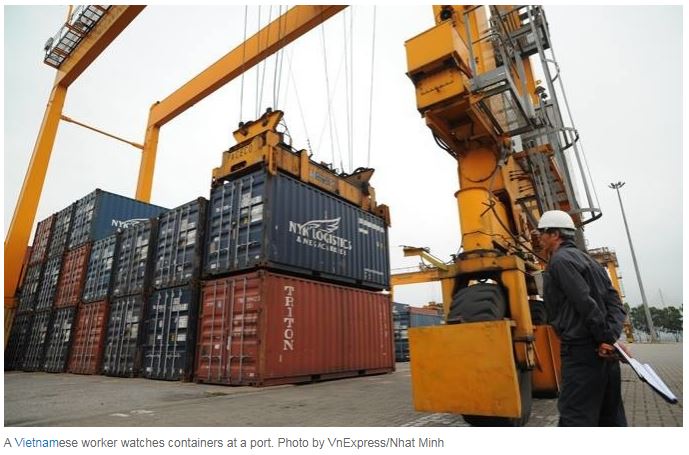For Vietnamese exporters, ASEAN market remains bridge too far
Vietnamese companies are struggling to sell their products to ASEANmember countries despite the abolition of tariffs within the bloc.
Analysts blame this on their lack of market information and poor understanding of consumer needs among other factors.
With the formation of the ASEAN Economic Community (AEC) three years ago, members had to reduce over 90 percent of their tariff lines to zero percent, though Vietnam, Laos, Cambodia, and Myanmar were allowed until 2018 to do so.
Yet Vietnam’s intra-ASEAN exports accounted for only 11 percent last year while this number for other members averaged 24 percent even in 2016, Nguyen Thi Tue Anh, deputy head of the Central Institute of Economic Management (CIEM), said at a recent conference.
Anh said besides Vietnamese enterprises’ lack of market information, they have also failed to adequately differentiate their products from those of competitors within the bloc.
A spokesperson for a business based in southern Soc Trang Province said his company, which produces dried fish and other fisheries products, wants to take its products to the ASEAN market but does not know how.
Saigon Times newspaper quoted him as saying that there are many factors such as package design, marketing and market research, and it does not know where to begin since all are equally important.
Ha Xuan Anh, chairman of HCMC-based textile maker Son Viet, said his company’s products – undergarments – are sold at many modern retail outlets. But for the last 10 years it has sought to sell to Singapore, Thailand and Malaysia, and has been unable to do so.
He explained that though the quality of his company’s products is competitive, Vietnamese brands remain unknown in these markets.
It only sells in markets with less competitive products such as Laos, Cambodia and Myanmar.
Pham Thiet Hoa, director of the HCMC Investment and Trade Promotion Centre (ITPC), also blamed the weaknesses of Vietnamese enterprises for their inability to export, listing lack of product diversification, failure to closely liaise with authorities responsible for foreign affairs, and poor marketing.
ITPC said small companies entering a new market alone would find it very difficult to identify foreign business partners and distribution chains.
Hoa said it is therefore necessary for trade envoys to work with their counterparts in foreign markets to bridge this gap.
Participating in fairs, exhibitions and trade promotion programmes in target markets enables companies to assess the competitiveness of local rivals, he said.
Despite the free trade environment, each country in the bloc has differences in culture, religion and consumer preferences, and businesses need to understand them before venturing into those countries, he said. “Enterprises should also carefully study the technical barriers and legal regulations to avoid losses.”
Source: https://e.vnexpress.net/news/business/economy/for-vietnamese-exporters-asean-market-remains-bridge-too-far-3828056.html


 English
English




